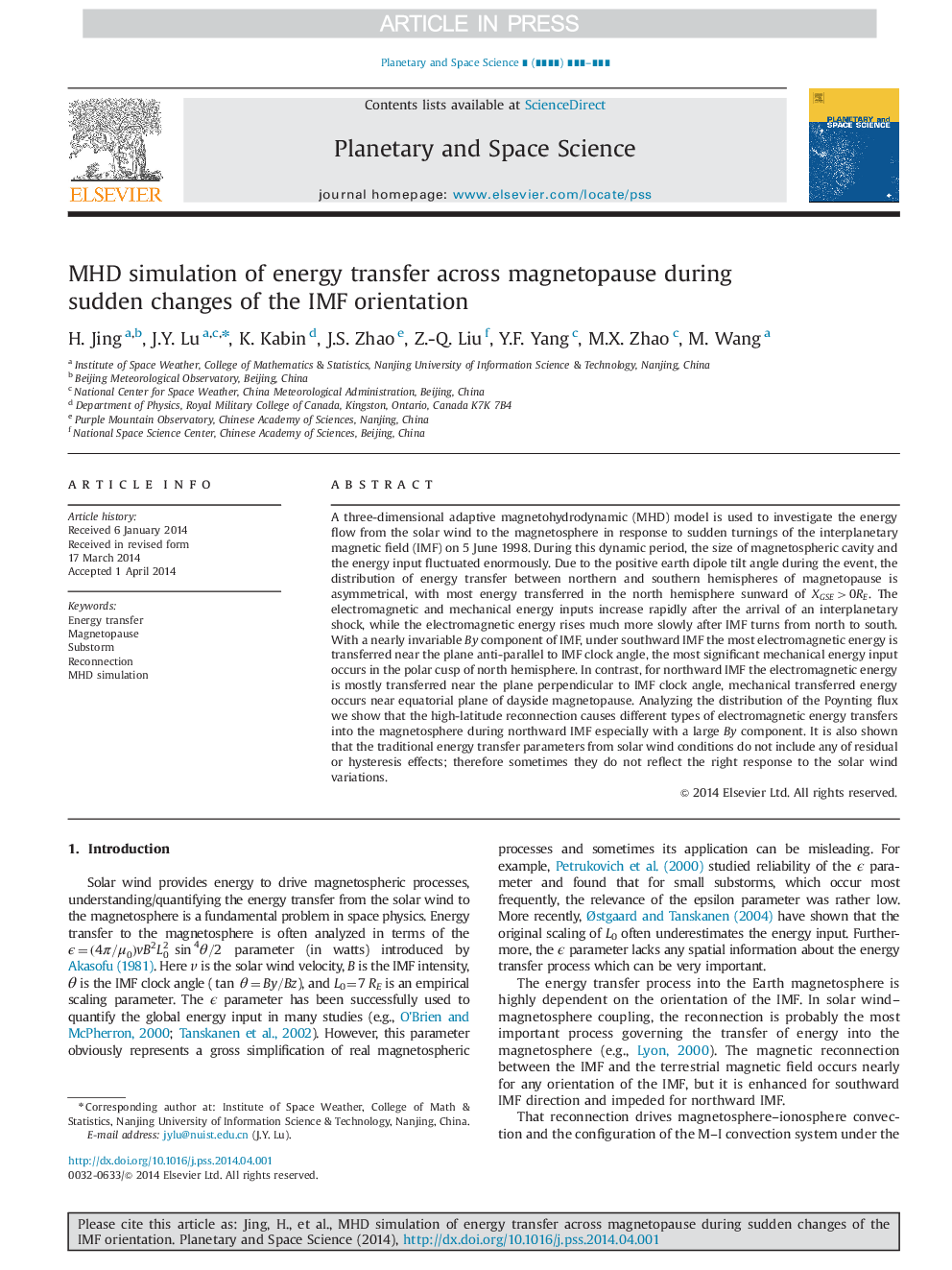| Article ID | Journal | Published Year | Pages | File Type |
|---|---|---|---|---|
| 1781123 | Planetary and Space Science | 2014 | 10 Pages |
Abstract
A three-dimensional adaptive magnetohydrodynamic (MHD) model is used to investigate the energy flow from the solar wind to the magnetosphere in response to sudden turnings of the interplanetary magnetic field (IMF) on 5 June 1998. During this dynamic period, the size of magnetospheric cavity and the energy input fluctuated enormously. Due to the positive earth dipole tilt angle during the event, the distribution of energy transfer between northern and southern hemispheres of magnetopause is asymmetrical, with most energy transferred in the north hemisphere sunward of XGSE>0RE. The electromagnetic and mechanical energy inputs increase rapidly after the arrival of an interplanetary shock, while the electromagnetic energy rises much more slowly after IMF turns from north to south. With a nearly invariable By component of IMF, under southward IMF the most electromagnetic energy is transferred near the plane anti-parallel to IMF clock angle, the most significant mechanical energy input occurs in the polar cusp of north hemisphere. In contrast, for northward IMF the electromagnetic energy is mostly transferred near the plane perpendicular to IMF clock angle, mechanical transferred energy occurs near equatorial plane of dayside magnetopause. Analyzing the distribution of the Poynting flux we show that the high-latitude reconnection causes different types of electromagnetic energy transfers into the magnetosphere during northward IMF especially with a large By component. It is also shown that the traditional energy transfer parameters from solar wind conditions do not include any of residual or hysteresis effects; therefore sometimes they do not reflect the right response to the solar wind variations.
Related Topics
Physical Sciences and Engineering
Earth and Planetary Sciences
Geophysics
Authors
H. Jing, J.Y. Lu, K. Kabin, J.S. Zhao, Z.-Q. Liu, Y.F. Yang, M.X. Zhao, M. Wang,
